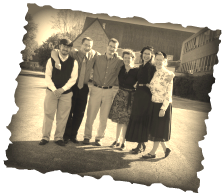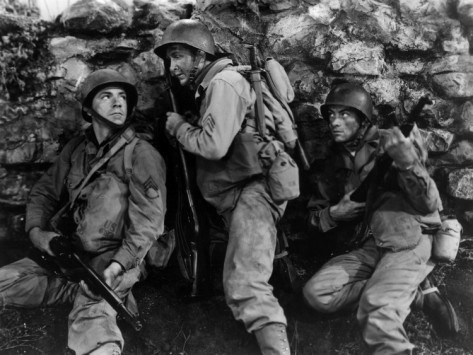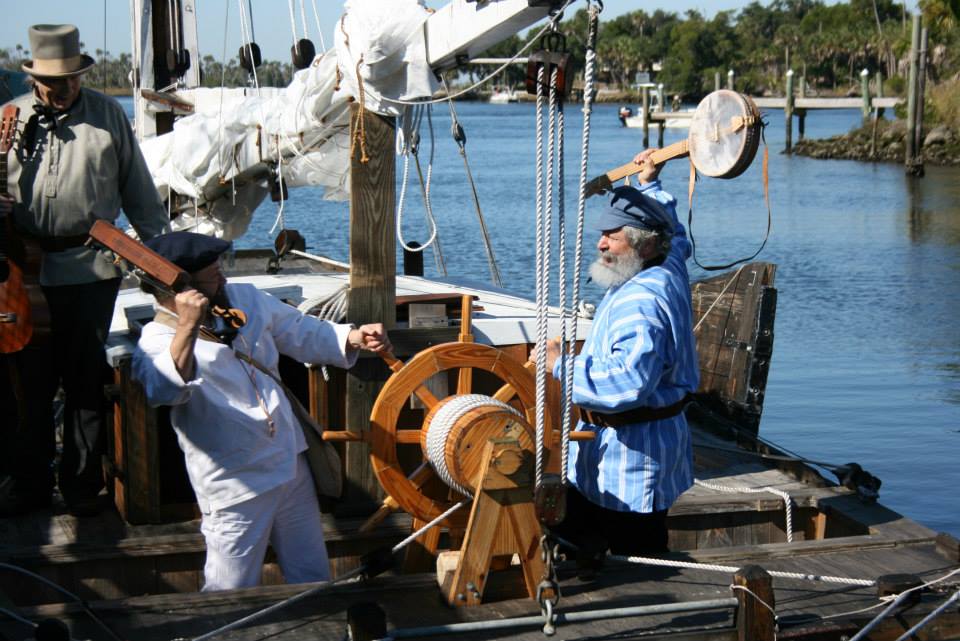A state is one’s position or status in life. It is one’s legal standing before God’s law. (172)
Jesus Himself has stood in two distinct states before God’s Law on our behalf in order to save us from our sins. The first state (of humiliation) began with His incarnation, when He assumed the state and condition of guilty sinners in order to save them. The second state (of exaltation) began with His resurrection, after He had perfectly satisfied the justice of God by His obedience and death. (173)
If Jesus Christ was to be our Mediator and Savior, it was necessary that He, the Lord of heaven and earth, the supreme Lawgiver, place Himself under His own Law, and become legally responsible for our sins and liable to the curse of God’s Law broken by human beings. He suffered humiliation for our sakes....According to Philippians 2:5–8, Christ’s humiliation consisted of two elements: (1) He condescended to where we are by laying aside the glory of His majesty as the
Ruler of the universe; and (2) By taking upon Himself the form of a human servant, subject to Biblical Law and becoming obedient to the death of the cross. (173)
God, in the bosom of the Father, he was pleased in the fulness of time to become the son of man, made of a woman of low estate, and to be born of her; with divers circumstances of more than ordinary abasement.):
His humiliation consisted in His incarnation, His human life under God’s Law, His suffering under the wrath of God, His death, and His burial.... 143. Webb, Christian Salvation: Its Doctrine and Experience, 242. (179)
When the Son of God became incarnate, He brought Himself under God’s Law as its subject and servant, which Law “He perfectly fulfilled” for us (Matt. 3:15; 5:17), thereby meriting by His life as well as by His death our eternal salvation. What humiliation! He who is the Lord, above the Law, now in His humiliation, is subject
to it, liable to all its censures and curses as the representative of sinners....Placing Himself under the Law of God as our representative, He subjected Himself to the curse of that Law due us for our sin: “Christ has redeemed us from the curse of the law, being made a curse for us” (Gal. 3:13). “As he obeyed what the Law enjoined,
so he suffered what it threatened as a punishment due to us for sin.” 145. Ridgeley, Commentary on the Larger Catechism, 1:581. (181)
disciples, scorned and rejected by the world, condemned by Pilate, and tormented by his persecutors; having also conflicted with the terrors of death, and the powers of darkness, felt and borne the weight of God’s wrath, he laid down his life an offering for sin, enduring the painful, shameful, and cursed death of the cross.
Jesus began shedding His blood for our salvation, first, at His circumcision in infancy, then again in the Garden of Gethsemane (Mark 14:33–34). He sweat, as it were, great drops of blood in deep anguish of soul. In Gethsemane, His blood was forced out of Him by internal agony of soul, when He offered His soul as a sacrifice for sin. On Calvary, His blood was forced out of Him by external physical affliction, when He offered His body as our sacrifice. Gethsemane and Calvary taken together "show us that Christ’s blood is being demanded by the whole system of the universe. Heaven draws it out, hell drives it out, and the earth forces it out. From every side Christ’s blood, which is the bearer of life, is demanded of Him.… One would need to have been in hell for some time in order to understand what it is that is tearing Jesus apart in the Garden." 150. Klaas Schilder, Christ in His Suffering, trans. by Henry Zylstra (Grand Rapids, MI: Baker Book House, [1938] 1979), 370. (186)
Here is the offense of the cross—a naked God, a naked Messiah,
hanging on a cross. Here is where our faith is to rest and find salvation—in a naked Savior. (187; Dr. Morecraft's emphasis)
Because His death was the infliction of the wrath of God and the punishment for sin God’s justice required, for this impeccable Jesus, it was a “shameful, painful and cursed” death on a cross. His pains in dying this death were incomparably severe and excruciating in body and soul. His death was shameful: “He despised its shame” (Heb. 12:2), not only because He was stripped naked on the cross, but because crucifixion was inflicted upon none but the lowest and most wicked criminals. And His death was a cursed death because on the cross, as the substitutionary sacrifice of God’s chosen people, Christ “was made a curse for us, as it is written, ‘Cursed is every one who hangs on a tree’” (Gal. 3:13). (188)
the dead, and under the power of death till the third day; which hath been otherwise expressed in these words, “He descended into hell.”
His humiliation is not over with His crucifixion. He must be buried and remain under the power of death in the grave, as a subject of the kingdom of Satan (John 19:38–42)....The humiliation of the grave was a part of the shame of death. (189)
His work of satisfaction would not be completed until He was raised from the grave, when He was declared to be the Son of God with power. Not until His resurrection did He fully conquer death and hell. (190)
The Apostles’ Creed refers to this aspect of His humiliation as His descent into hell—He descended into hell....From Friday until Sunday morning, Jesus suffered the torments of hell for us. (190)
Therefore, since the disciple is not above his master, and is, in fact, to imitate His master, you and I must seek to be as committed to saving sinners, through the exposition of the gospel of Christ in the power of the Spirit, as Jesus was through His humiliation and death. We must be like Paul, who was willing to be all things to all men, that he might thereby save some (1 Cor. 9:22). (191)
The exaltation of Jesus is God the Father’s “Amen!” to Jesus’ “It is finished!” When God raised Jesus from the dead on the third day, He exalted Him in a transcendently glorious manner by giving Him again that of which He emptied
Himself: glorious honor, praise, majesty at God’s right hand, treated and praised as One who is equal to God, with the Divine Name, “Lord,” whom all will publicly recognize and confess. (192)
God began the exaltation of the humanity of Jesus from His humiliation by raising Him from the dead on the first day of the week... Christ’s resurrection is as historical as any other event in His life(Mark 16:1–8; 1 Cor. 15:12–58). He arose in the very same body in which He suffered, with the essential properties thereof, (but without mortality, and other common infirmities belonging to this life), really
united to His soul. The point of the Larger Catechism in these words is that Christ’s resurrection was a physical one. (194)
The Christian’s life, therefore, is always to be viewed as resurrection life. Baptism signifies and seals the transition in the life of the Christian from being apart from Christ and dead to being joined to Christ in His death and resurrection and alive....That is what happens to us in the new birth. ...
Therefore, we must keep these three truths and realities together in our mind and in our faith: (1) The historical resurrection of Jesus from the tomb; (2) The internal resurrection of Christians, which is called the new birth; and (3) The external resurrection of Christians, i.e., the resurrection of the body at the return of Christ. (203)
Now we come to another issue: Why did Jesus arise from the dead on the third day after His crucifixion? Why did divine providence ordain that a space of three days would pass between Christ’s crucifixion and resurrection? (1) It apparently pleased God, in His wisdom, to ordain such a three-day space of time between Christ’s
crucifixion and resurrection, to give sufficient evidence that Christ was really dead, since our eternal salvation depends on that fact. (2) It apparently pleased God, in His goodness, not to allow Christ to continue too long in the state of the dead.... He raised Jesus from the dead on the third day, while His death was still fresh in people’s memories. (204)
The Larger Catechism Q. 52 makes three points that need some explanation. First, it says that after Christ’s physical death, “His body did not see corruption,” i.e., His physical body did not putrify and begin returning to dust....Second, we are told that it was “not possible for Him to be held” in death....Why was it impossible for death to “keep its prey”? (a) Christ is the Creator incarnate, the Lord and Giver of Life;
(b) Christ is the sovereign God incarnate, who predestined His resurrection as well as His death. Jesus Himself said earlier in His ministry: “Destroy this temple [referring to His body], and in three days I will raise it up” (John 2:19). Third, Christ “rose again by His own power,” i.e., He raised Himself from the dead by His own power. (206-207)
Saving faith believes in God the Father in terms of the resurrection of Jesus Christ. It believes that God has said something special and specific to the believer by raising Jesus from the dead.
First, by raising Jesus from the dead, God is telling us that Jesus is the Lord of our lives and of our world: “Therefore let all the house of Israel know for certain that God has made Him both Lord and Christ” (Acts 2:32). ...
Second, by raising Jesus, God is attesting the claims of Christ to be God incarnate. He is saying to us: “This is My Son, hear Him!” ...
Third, by raising Jesus, God is telling us that He is fully and completely satisfied with the redemptive work of His Son on the cross. ...
Fourth, by raising Jesus, God is telling us the good news that all the covenant promises of God are realized in Christ and are poured out on us. ...
Fifth, by raising Jesus, God is declaring that a New Era has dawned for the world. A New Heavens and New Earth are in the making. A New Day of Salvation in the Kingdom of God has broken into human history, and its light is gradually swallowing up the darkness of this world. ...
Sixth, by raising Jesus, God is assuring us that He has made Christ the firstfruits of them that sleep (1 Cor. 15:20f), not only guaranteeing our physical resurrection from the grave, but also our spiritual resurrection from sin in the new birth. ...
Seventh, by raising Jesus from the dead, God is proclaiming His triumph over all His enemies, and ours—sin, Satan and death. (210-212)









 RSS Feed
RSS Feed















